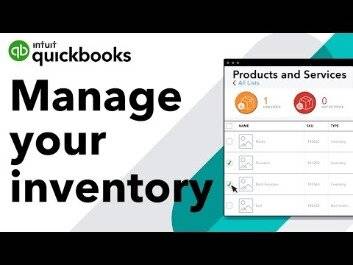Content

Half of our 56% Of Employees Take A Lunch Break Of 30 Minutes Or Less jobholders don’t want to continue working under this kind of pressure for more than a year. Moreover, the next generations of management—the so-called Gen X and Gen Y cohorts—seem less enamored of their jobs than baby boomers. In the 45-to-60 age group, only 19% of extreme jobholders say they are likely to leave their jobs within two years; this figure rises to 30% in the 35-to-44 age group and to 36% in the 25-to-34 age group. The ultimate price may be paid in succession planning if maxed-out professionals stop striving for top jobs. In our survey, 65% said they would decline a promotion if it were even more demanding of their energy. In the world of extreme sports, the more daring, demanding, and—this is telling—gratuitous the feat, the greater our awe of the athlete.
Instead of putting boundaries around their workday, they’re constantly glued to their cell phones and BlackBerrys. 72% of professionals believe that setting clear objectives is what makes a meeting successful. We should then be wary of treating our now regular video calls as just ticking off a task in a checklist and increase their quality, as opposed to their quantity. 76% of professionals prefer face-to-face meetings over other methods. 17 meetings per week for VP, director and c-level roles in highly collaborative industries. With Zoom and Teams meetings being ubiquitous in recent years, it’s become much easier to schedule more meetings, and go over time.
Create the Perfect Remote Work Schedule in 10 Simple Steps
One oil company executive we interviewed ran a global team composed of colleagues in Angola, the United States, and China. Other professionals in our focus groups told anecdotes about pulling all-nighters and defying jet lag to attend back-to-back meetings in Singapore and New York. The difficulty of waking up to participate in global conference calls in the middle of the night was a common refrain.

The power of physical connection remains despite the domination of technology, especially as face-to-face meetings have been restricted due to the pandemic. Clockify is a time tracker and timesheet app that lets you track work hours across projects. I tried a 30-day productivity challenge — Here’s what I learned I tried different productivity hacks for 30 days, and here’s what I learned…. How I tried the 10-minute rule to learn about productivity Are you struggling to finish that one important task?
Amplifying Employee Behavioral Health Through Primary Care
One of the biggest problems with distractions is that they directly lead to productivity loss. This is tied to the hours employees lose because of their lack of focus on their priority work tasks. An Owl Labs study revealed that 59% of its survey respondents were likely to choose an employer that offered hybrid work or remote work options. The study also found employees to be 22% happier working from home than in an office setting. On the contrary, office workers reported spending 37 minutes each day not getting their work done, while remote workers only lost 27 minutes of each working day for the same.
- 23% of respondents from the Udemy research report propose introducing regular “no-meeting” days, in order to introduce at least one day per week when no one will be distracted and interrupted by meetings.
- Just like with your phone, you can also set a schedule for when you’ll check your Social Media accounts, be it every 30 minutes, 1 hour, or 2 hours.
- Thirty-seven percent of workers say they have more debt than they can manage.
- The same report states that employees likely have lower wellness if they have short meal breaks, eat meals at their workstations every day, or don’t take breaks at work.
- In this article, you will find general statistics on taking breaks at work, as well as information about different types of breaks, their lengths, and their effects.
If they lose 15 by the time you clock out, they don’t get dessert that night. This is less fun for everyone but an effective way to teach children who don’t understand why parents need quiet time during work. The great benefit of working from home is developing a space that helps you thrive and be productive. Add a plant, hang a painting, and have an adjustable light so you can adjust the light settings as needed, including a picture of the family, etc.
Conversion Rate Optimization: A Look at the Statistics
People are constantly creating new tools for remote workers to be more productive while remaining a cohesive part of a team. Viruses often sweep through office spaces, especially when it’s flu season. Working from home minimizes how often you come into contact with sick people.
Many WFH employees follow the Pomodoro Technique of taking a 5-minutes break after working every 25 minutes. This technique has proven effective in combating multitasking and improving concentration. Employers should encourage their remote team to write down tasks for every working hour. They could use a digital to-do list, Google Docs, or a physical day planner. While it’s tempting to work from the couch or bed, creating a functional office space at home can help boost their work efficiency and WFH productivity. Now let’s look at some things employers could suggest to their remote employees to become more efficient and productive.
By contrast, of those meeting high performance requirements and putting in longer hours, only 30% are women. The data suggest that women are not afraid of the pressure or responsibility of extreme jobs—they just can’t pony up the hours. Communication technology seems to have both liberated and shackled extreme professionals. In our U.S. survey, 67% of people with extreme jobs said that being available for clients 24/7 is a critical part of being successful.
‘Restore some civility’: Budget comments heat up Asheville council – Citizen Times
‘Restore some civility’: Budget comments heat up Asheville council.
Posted: Wed, 01 Mar 2023 10:13:26 GMT [source]
Incentivizing a lunch break is good for workers, good for your company, and supports local restaurants and businesses. However, it’s ultimately up to the worker on how they want to organize their day’s breaks. For one person, that might mean getting up for a 5 to 10 minute walk every hour, taking a 30 minute lunch break, or powering through the day to leave 30 minutes early if needed. Meanwhile, in the United States,one in five Americanseat away from their desks. In 2018, a survey revealed that56% of employeestake a lunch break of approximately 30 minutes.
An organization with overworked employees will only hurt its bottom line in the long run. So before you skip lunch, remember that your brain uses 20% of your energy . You need to eat to refuel your brainpower and ultimately create a healthy, thriving culture at work. Yet, proper lunch breaks improve job performance and can prevent burnout.
- Use a microphone that absorbs and eradicates background noise for client calls.
- Templates and tabs speed up your workflow, improve productivity, and streamline your task list.
- It can trigger coping and avoidance strategies that make you seek other distractions, which only makes the problem worse.
- These are poignant examples of the costs of extreme work to individuals, but there can be costs at the company level, as well—for instance, when burn-out occurs.
- In line with that, meetings are often viewed as disruptive, both when compared with other work tasks, and on their own.
- The idea of ignoring work responsibilities until you’re back on the clock is more important than ever when you work from home.
If it feels like the hours in the day keep escaping you no matter what you do, you’re not alone. This is not saying that one culture is more hard-working than the other. It shows how European governments and businesses are looking after their people to boost productivity and improve workers’ work-life balance. According to a survey of more than 1,000 U.S.-based employees conducted by BambooHR, today’s employees spend less time “on the clock” involved with digital distractions than with traditional distractions. And contrary to conventional wisdom, frontline employees aren’t the ones spending the most time wrapped up in these common distractions—across the board, senior leadership indulges more. The key question, of course, is whether all this creates a barrier for ambitious women and for companies that want to achieve more gender diversity in their upper ranks.